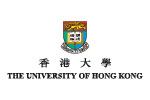“Cheap local eats, low income, subdivided flats – this was my flat, stereotypical and almost depressing image of Sham Shui Po,” said fourth-year Bachelor of Arts student Tiffany Tse Tin-lam. But when an opportunity arose to go into the district and speak to ethnic minorities, new immigrants and local business owners, she was curious. What lay beneath the surface of that image?
The opportunity was the 360 Diversity Programme, a pilot project that started with a 360-degree screen and evolved into a broader community project.
Dr Nicol Pan, Associate Director of the Common Core Curriculum, was the instigator. Dr Pan introduced the screen last summer in the Global Lounge to let teachers and students experiment
with the learning possibilities of this planetarium-like tool. Shortly after, she was approached by Sham Shui Po florist, Rinato Eco Floral, a social enterprise managed by the Tung Wah Group of Hospitals (TWGH) that had space it wanted to use to promote science and technology education in the district. She thought, why not combine the two?
“A 360-degree screen is immersive and the technology is accessible – you need a 360 camera but you don’t need special skills creating 3D models,” Dr Pan said. “When I suggested they try this, they were interested but they wondered where the content could come from. That’s where we came up with the idea of a collaboration with the Common Core, where students could help create programmes for that space.”
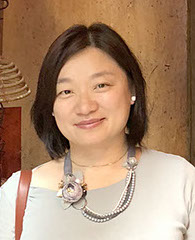
![]() This was the first time the Tung Wah Group of Hospitals had worked with university students on this kind of creative project and they gave us a lot of positive feedback about the quality of
This was the first time the Tung Wah Group of Hospitals had worked with university students on this kind of creative project and they gave us a lot of positive feedback about the quality of
our students. ![]()
Dr Nicol Pan
Story-telling skills
TWGH provided contacts in the community and Dr Pan recruited a team of six students, including Tiffany, who were interested in exploring the culture of Sham Shui Po and telling people’s stories. She also brought in experts to train students in story-telling skills.
HKU’s Digital Literacy Laboratory provided workshops on making videos and loaned the students equipment, including 360-degree cameras. The founder of the community-based Theatre in the Dark, Comma Chan Yin-wang, trained the students in creating a drama performance. And the TWGH assigned a social worker to work with the students and brief them on the dynamics of the Sham Shui Po community.
Dr Pan also brainstormed ideas with the students about the kinds of stories they wanted to tell and led them through mock interviews so they could practise ahead of the real thing.
The stories focussed on a Pakistani family, new immigrants and hawkers at the Yen Chow Street fabric market, which has been earmarked for demolition. The students discovered a vibrant, proud community that, despite being the poorest in Hong Kong, defied the negative portrayals seen in the media.
“I was surprised by how optimistic a lot of the interviewees were about the future and ashamed of myself for prescribing to a negative view of their lives,” Tiffany said. “The most important takeaway for me is that you can never know what others are thinking unless you step up, reach out and talk with them.”
Diverse and tolerant
Gabriel Fung, a first-year Bachelor of Journalism student, said the project gave him an opportunity to develop story-telling skills and explore a community that he had little previous exposure to. He was particularly struck by the strong sense of neighbourhood identity, even in the crowded, dusty fabric market.
“It’s extraordinary that people still want to keep that place, but it’s an integral part of their cultural identity,” he said. “We wanted to capture these views and leave the audience with the message that Sham Shui Po is a diverse community, it embraces people from different places and is constantly changing and adapting, but at the same time it wants to retain the culture that is there now.”
Ma Guolei, a Master of Education student originally from Xinjiang province who previously worked as a journalist, was also struck by the diversity. “Many people in Mainland China think Hong Kong is a very modern and rich city. But you can find poor people living in Sham Shui Po,” she said. At the same time, she was surprised to find the Pakistani family talking about the friendliness shown to them and how they enjoyed their life in Hong Kong. “Hong Kong is very tolerant of all kinds of cultures and people, I like this about the city.”
The students’ video produced won the first Common Core x U-Vision Video Contest held in February, in the category ‘Learning on the Go’. They also created and performed a drama based on their interviews which was staged on campus in April.
“This was the first time the TWGH had worked with university students on this kind of creative project and they gave us a lot of positive feedback about the quality of our students. I also learned how to collaborate with local non-profit organisations,” Dr Pan said.
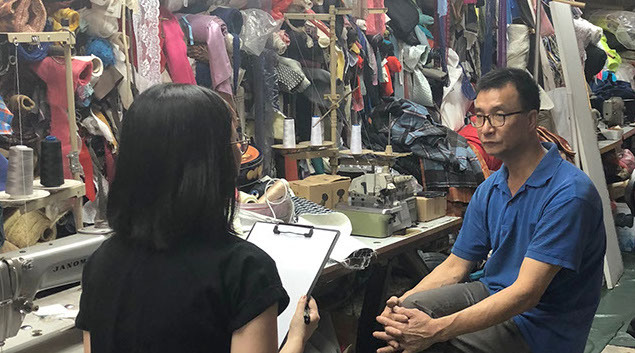
A 360-DEGREE TAKE ON
a dynamic hong kong community
A collaborative project involving students, HKU staff and community partners has shone a positive light on the ever-changing Sham Shui Po District and resulted in a drama performance and an award-winning film.
Next
Back
Tiffany Tse (left), a fourth-year Bachelor of Arts student interviewing Mr Ho (right), the spokesperson of the Sham Sui Po Textile Market, which was established in the 1970s and is scheduled to be demolished soon.
HKU students learned to tell stories and express their emotions through body movement under the instruction of Comma, the Drama coach from the Theatre in the Dark.
The video produced by Gabriel Fung (right) and teammates won the first Common Core x U-Vision Video Contest in the ‘Learning on the Go’ category.
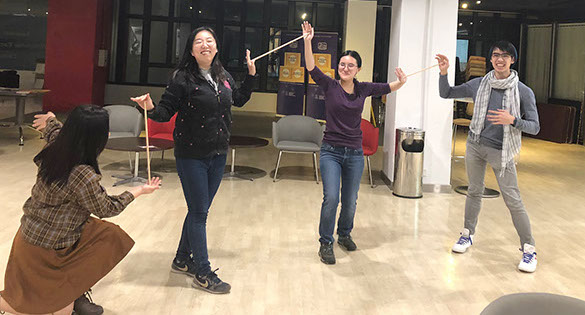
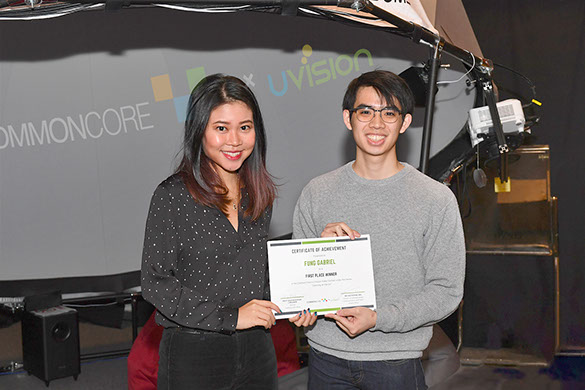
Home
May 2019
Volume 20
No. 2

Teaching and Learning
